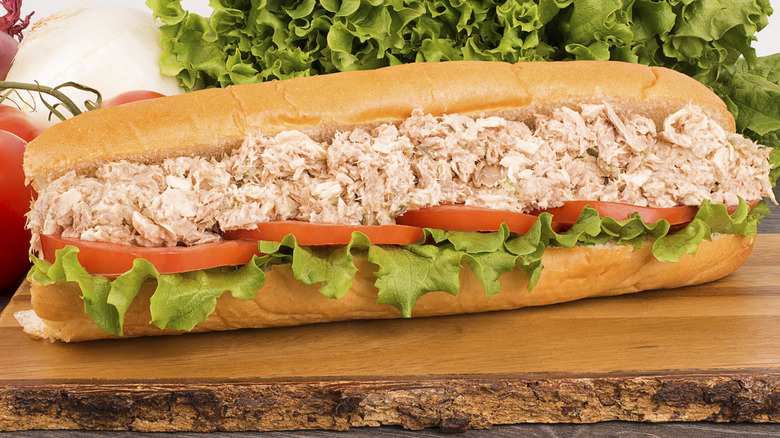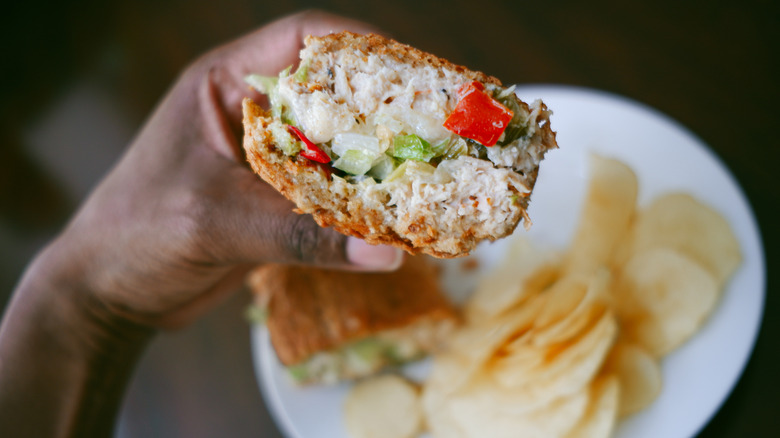Why You Might Want To Avoid Ordering The Tuna Salad At Fast Food Restaurants
So, you're at your favorite fast food sandwich shop and the tub of tuna salad is singing its siren song to you. The tangy, creamy, and meaty mayo-based salad is certainly a tempting sandwich filling choice. It's a classic, after all. In fact, Julia Child loved tuna salad, and adorned her sandwiches with some zesty additions. But you might want to think twice before you grab a scoop of tuna on your next fast food sojourn.
Why? Well, it turns out that bowl of tuna salad might not be so fresh. This is according to the input of many fast food workers who warn against the food choice. In an article posted by Reader's Digest, one former Friendly's employee warned that the restaurant only made one batch of tuna salad per week. And this isn't only an issue at Friendly's. One former Subway worker posted on Reddit that, "Subway, tuna is literal poison in a container. It is always several days older than expiration." Once again, freshness is a paramount issue. Of course, then comes the question as to whether Subway's tuna is even, well, tuna.
The primary issue with fast food tuna salad seems to be that it is made in large batches and stored over extended periods of time. For many restaurants, especially sandwich shops that store many food products on a cold bar, an issue of heat and exposure to the elements can also be an issue. If tuna salad is not kept at a proper temperature (below 40 degrees Fahrenheit), it can grow bacteria that may lead to food poisoning.
How to know when your tuna has turned
With all of this warning against tuna salad in mind, you might think that it is best to avoid the dish entirely, but this is unnecessary. When tuna salad is properly prepared and stored, it isn't any riskier than most other foods when it comes to spoilage. Tuna salad is usually made with mayonnaise, and mayonnaise has a vinegar base, which acts as a preservative. This is contrary to a popular yet false belief, which holds that mayonnaise grows bacteria. In fact, mayonnaise can both kill and prevent harmful bacteria from forming in your food.
However, there are a few things to keep in mind when making and storing your salad. For starters, its shelf life is relatively short, usually staying safe to eat if kept in the fridge for between three to four days. Now, this varies based on a number of factors. For example, if you used yogurt instead of mayo, your tuna won't last as long. If you mix in fresh veggies, such as onion or celery, the tuna salad will probably only stay fresh for as long as those ingredients do after chopping. Ingredients like avocado, will shorten this time considerably.
So, how can you tell if you tuna salad has turned the corner? If your tuna salad is still only a few days old, but is in question, there are a few ways of figuring out if it is still good. If your salad has taken on a foul smell, you'll want to go ahead and toss it. Additionally, if you see spots of mold or notice a change in color or texture, you'll want to throw the batch away and start anew.

